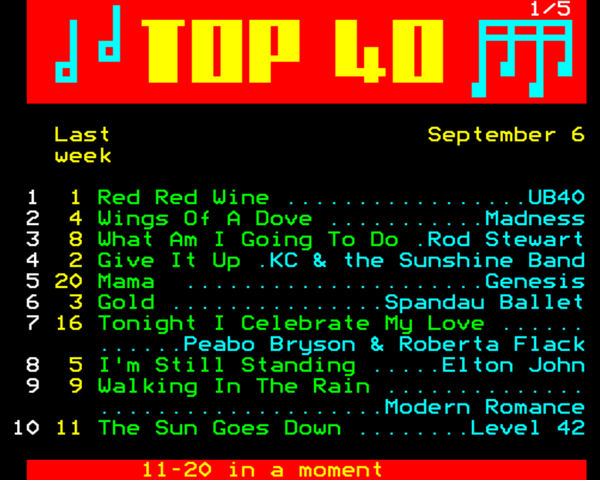

Maybe you've seen CC in 70's when it started LOL As a matter of fact I prefer CC than subtitles on DVDs, because CCs are almost always positioned on the screen to be least obtrusive as possible (if action happens at the bottom, theyre on top of screen, if many people talk at once their dialogue lines appear above or below them on screen, etc etc) which IS way way better than 'dumb' DVD subtitles displayed always at the bottom.

all mexican soap operas have those funny spanish letters) AND text positioning on screen (as well as capital and small letters in case you think it only has CAPITALS as many people do.). Maybe I dont live long enough, but as far as *I* can remember CC always had colors (many commercials have very, and I mean VERY colorful CCs), international characters (i.e. So to say that they don't put an effort in subtitling broadcasts is rubbish.
TELETEXT SUBTITLES MOVIE
We've already lost most of the video and movie review pages
TELETEXT SUBTITLES TV
Teletext is gradually being phased out on analogue TV in the UK as broadcasters prepare for the changeover to all digital TV. It quite often makes me turn back to a non commerical channel. It is not the adverts per se on commercial Teletext which annoy me but their insistence on using flashing images. The bandwidth required was too great for VHS releases. Pioneer released a very limited number of laserdiscs in europe with Teletext subtitle pages in various languages. It quickly expanded to become a news delivery system with one page being reserved for subtitles for hard of hearing. So to say that they don't put an effort in subtitling broadcasts is rubbish.īravo RAI It was originally called Ceefax and invented by an engineer at the BBC as a way of sending messages to other engineers within the BBC without them being seen by ordinary viewers.

That includes 3 Flemish/Dutch stations, 3 Dutch stations, 2 Walloonish/French stations, 1 French station, 2 English stations, 2 German stations and 1 Italian. Één, Ketnet/Canvas, VTM, Ned1, Ned2, Ned3, La Une, La Deux, France 2, BBC One, BBC Two, Ard Das Erste, ZDF, Rai Uno It 's true that some commercial stations abuse Teletext for commercial purposes, but still, I can watch subtitles on 14 (out of 26) channels here : PAL Teletext is way superior to closed captions, with colour support, international characters support, and positioning the text anywhere on screen. There 's no such thing as a "weird" language. Having so many weird and different languages all over Europe, with tv channels availability in many languages too everywhere almost, I would say that TT should have been put to use the way old CC (Closed Captioning) is in NTSC world, but wherever Ive been in Europe, TT was always used for spam delivery mostly, and some local news as distant second purposeīravo RAI This sounds more like an anti-European post. The findings of the main experiment, analysed using statistics, and the children's feedback, obtained orally at the end of the main activity and presented in a narrative form, are discussed as a contribution towards future research.Yeah, I never understand philosophy behind the TeleText. Case studies are used in the piloting leading to the main experiment, which consists of exploring techniques to enhance word recognition and content comprehension. Hands-on research is conducted with a group of deaf children recruited from a mainstream school. The ultimate aim of the project is to contribute to the subtitling practice of deaf children by conducting empirical analysis. Education for the deaf is also tackled, encompassing the history, philosophies and current trends. Deaf children are placed in their social context and the different types of hearing loss, prelingual and postlingual deafness, and cochlear implantation are discussed. In doing so, contributions from both Deaf Studies and Audiovisual Translation are considered. In an attempt to gain an understanding on how deaf children read subtitles, the linguistic difficulties encountered in the acquisition of a spoken language as well as their reading characteristics are examined. A descriptive and comprehensive study on how children’s programmes broadcast in British television are subtitled for deaf children constitutes the starting point of the project. It starts by offering an overview of relevant research on Subtitling for the Deaf and the Hard of Hearing (SDH), conducted both in the UK and abroad. This thesis is a contribution towards the subtitling practice of audiovisual programmes for deaf children.


 0 kommentar(er)
0 kommentar(er)
